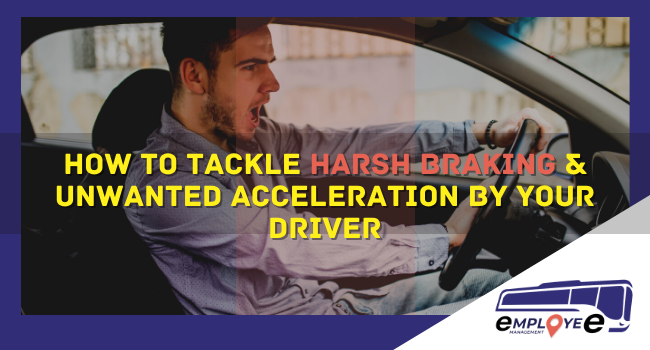Driver Behavior is the key in maintaining efficiency and safety when it comes to a fleet. However, some negative driver behavior like over speeding, hard braking etc. can do the exact opposite.
Mostly issues like these are left unnoticed by transport managers who think of it as miniscule and not harmful.
However, an experienced manager would beg to differ. They know that constant vehicle maintenance, traffic law breach, Accidents, wear and tear of vehicle parts can be hefty. Cost wise and reputation wise.
So the obvious question here would be to how to tackle this issue?
Let’s address this issue in detail.
How will hard braking directly affect the efficiency of a fleet?
A well experienced driver will not apply excessive brake in unwanted situation as he knows the danger lying behind in doing so. Apart from this, applying excessive brake and that too with force frequently according to modern psychiatry might be an indication of a disorder named ‘Lead Foot Syndrome’. Besides the potential danger it will keep on draining money in the form of repair and replacement due to wear and tear.
Other issues include,
- Risk of injury to the passengers:
Passengers might not wear seat belts all the time. At the time of a hard braking there is a huge chance that momentum will push them forward and can cause injury.
- Wear and tear to the braking system:
Maintenance as well as replacement of vehicle parts should only happen on the scheduled or proposed time period that the vehicle company has promised. If it’s not it’s either because of the issue with the vehicle or with driving.
- Accidents:
Sudden braking will not stop a vehicle. Owing to the momentum the vehicle will slide forward, lose control or sometimes flip over in accordance with the speed.
What does unwanted, unintended, sudden acceleration mean? How does it affect the efficiency of a fleet?
Drivers most of them in the fear of a malfunction won’t turn off their vehicle while the entire journey. Above all owing to un-optimized routes or upon compulsion, persuasion or even lack of proper navigation drivers increases speed of the vehicle to cover up the time that has been lost. For each and every trip to be profitable it should run on a specific ration of petrol and what acceleration does here is simply sabotaging the entire budget of a trip.
Other issues include,
- Traffic Rules violation:
There is a speed limit inside cities all across the world. Exceeding speed limit will cause hefty fine to be levied from the owner of the vehicle or sometimes a legal case too.
- Prone to accidents:
It is obvious that unwanted acceleration is due to utter carelessness an it can prove to be hefty if the vehicle meets with an accident.
- Wastage of fuel:
Fuel is the most costly aspect of transportation. Vehicle idling and unwanted acceleration will increase cost. If it is in the case of organization with a huge number of employees the loss will be hefty.
- Environmental Damage:
Burning fuel in a combustion engine is directly proportional to the pollutants it releases. Ideal speed will always be a relief to our environment
What’s the solution?
Embracing technology has always proven to work well for issues like this. In this case usage of Transportation Management System is the most effective way to tackle the issue effectively.
Read Also: “Female Employee Transportation – Challenges and Safety Measures”
- Identify how frequent the acceleration and braking occur to find out the behavior of driver
- Send alerts to the driver if the speed of the vehicle has increased beyond the prescribed limit
- Visualized reports of driving behavior of each drivers can be provided to the management to take actions
- Providing drivers with GPS navigation and optimized routes
- Pre programmed pickup-as well as drop off points which can’t be altered unless there is proper authority
- Provide drivers with alerts as well as re-routes to avoid any adverse route conditions
- Providing communication capability for drivers as well as the passengers

